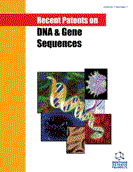Abstract
Research on antimicrobial peptides has gained pace to exploit their potential and ability to replace conventional antibiotics. Antimicrobial peptides are important members of the host defense system, as they have a broad ability to kill microbes. Antimicrobial peptides and proteins form an important means of host defense in eukaryotes. Large antimicrobial proteins ( > 100 a.a.), are often lytic, nutrient-binding proteins or specifically target the microbial macromolecules. Small antimicrobial peptides act by disrupting the structure or function of microbial cell membranes. A multitude of antimicrobial peptides has been found in the epithelial layers, phagocytes, and body fluids of multicellular animals including humans. Aside from their role as endogenous antibiotics, antimicrobial peptides have functions in inflammation, wound repair, and regulation of the adaptive immune system. In this review, we discuss recent patents relating to antimicrobial peptides. These patents are related to the method of identifying peptides that have antimicrobial activity, including the papillosin antimicrobial peptide and its encoding gene, the antimicrobial peptide isolated from Halocynthia aurantium, retrocyclins, and the use of cathelicidin LL-37 and its derivatives for wound healing. These patents provide valuable information that could be useful in the identification of antimicrobial peptides and the exploitation of their therapeutic potential.
Keywords: Antimicrobial peptides, papillosin, Halocynthia aurantium, retrocyclins, cytotoxicity, hemolytic activity, antibiotics, cathelicidin
 55
55

